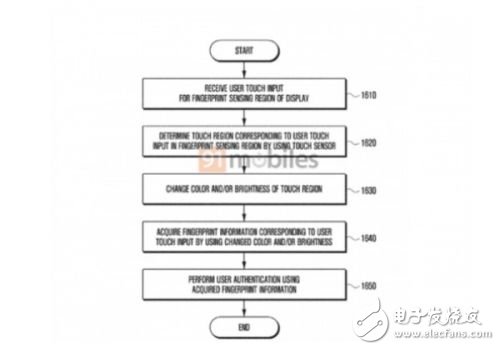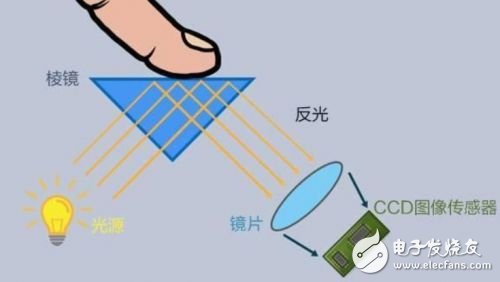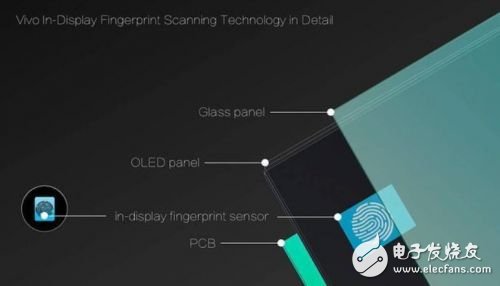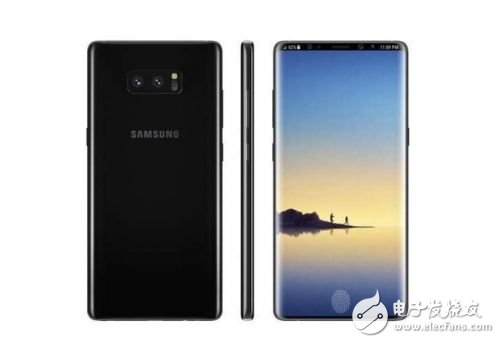May 8th news, not long ago there are rumors that Samsung Note 9 mobile phone will come in advance, this news is not groundless, supply chain news they have opened the design and mass production work of mobile phones ahead of schedule, two years earlier than the mass production work of Note 8 last year Starting in the month, it means that it is very likely to debut in July this year instead of waiting for September and the new iPhone to grab the user focus.
The reason for this may be to make a peak in advance. After all, September is a period of frequent new mobile phones, and Apple has prepared three mobile phones this year, all of which are heavyweight products, posing a great threat to Samsung. Samsung chose to announce Note 9 in advance. However, Note 9 is ahead of schedule, but it still brings a lot of interesting designs. The fingerprint on the screen is the focus of everyone's attention.

Note 9 screen fingerprint patent exposure
Not long ago, foreign media exposed the screen fingerprint technology of Note 9 mobile phones. Although Samsung did not specify the models of mobile phones, they still do not have the products of fingerprint technology under the screen, and the Note series is the flagship series of Samsung's most innovative. It is possible to add the fingerprint function under the screen.
This patent describes an on-screen fingerprint module that is very close to the position of the vivo X21. It is said that when the finger touches this area, the OLED screen will illuminate and penetrate the cover to illuminate the fingerprint texture. The fingerprint reflects the light through the screen to reach the sensor, forming a fingerprint image for recognition. At the same time, the source also said that Samsung is stepping up development of this technology, and plans to equip the next generation of high-end mobile phones with a fingerprint module under the screen, this phone is likely to be Note 9.
In addition, the source also revealed that Samsung has begun mass production of the screen of this phone, which means that the design work has been basically completed, and it is expected to be listed in July this year.

Which way does Samsung use it?
It is rumored that Samsung has tested three kinds of screen fingerprinting technologies, mainly focusing on two kinds of ultrasonic solutions and photoelectric solutions. We all know that there are actually three types of fingerprint recognition. In addition to the ultrasonic and optoelectronic solutions, there are capacitor solutions, but the capacitor solution cannot be integrated under the screen, so it is impossible to be the latter.

What are the differences between ultrasound and optoelectronics? In addition to vivo, there are no other mobile phone brands using the screen fingerprint technology solution, so there are not many cases that can be referenced. But ultrasound and optoelectronic methods have actually been used.
Previously, at MWC Shanghai, they showed the Xplay6 screen version of the engineering prototype equipped with the fingerprint under the screen. This engineering prototype did not show much content, but it appeared in the form of Demo. In fact, this demo was an ultrasound solution with Qualcomm, but I don't know why this solution didn't have a mass production application. It may be due to many considerations.
The solution used by the X21 screen fingerprint version is actually a screen fingerprint solution created by companies such as Synopsys and Qualcomm. Don't think that vivo only uses ready-made solutions. They also participated in the development and carried out a large number of technologies and supply chain layers. The integration, and these jobs can not be completed overnight, so so far other brands have not been able to launch similar products.
Closer to home, the reason why vivo finally chose the photoelectric solution, it should be because Xinsi's photoelectric solution is more suitable for mass production, and the actual use experience is better. It turns out that except for the slower unlocking speed than the independent fingerprint module, the other aspects are not too big.

So which way does Samsung use it? According to the Japanese media's breaking news, Samsung will use Synopsys' optoelectronics solution, which should be similar to the way of vivo. From the Samsung patent, the unlocking position and unlocking operation of vivo should be similar, but it does not mean that the two fingerprint technologies are exactly the same. After all, each family has their own considerations and technologies, which cannot be exactly the same.
Samsung has a unique advantage in fingerprints under the screenSamsung wants to achieve fingerprints on the screen, at least more advantages than many companies. On the one hand, as the world's largest mobile phone brand, they should not be underestimated in technology and research and development. On the other hand, Samsung holds the vast majority of supply. Chains, most of which include processors, memory, screens, cameras, etc., can be made by themselves. It has been jokingly said that if a mobile phone brand in the world can manufacture a mobile phone without relying on other brand components, So I am afraid that only Samsung can do it.
Why do you have an advantage in mastering the supply chain? This should start from the principle of fingerprinting of photoelectric reflection. Fingerprint identification requires three main modules: fingerprint acquisition, fingerprint identification and fingerprint storage. Fingerprint storage is an independent storage module, which is mainly used to store fingerprint information. The data of this module. It is one-way to ensure that the user's fingerprint security is not removed by cracking. Fingerprint recognition is a complex algorithm used to approve the current user, as well as a set of evasive mechanisms, such as determining whether the current finger is a real finger and whether it is a living body. Fingerprint collection is the most important part of the fingerprint under the screen. It is to collect the current fingerprint information, relying on it to enter and unlock.
The traditional fingerprint module uses invisible light to project onto the lens (Home button or the outermost side of the fingerprint module), and then flips over to the CCD image sensor, so that the fingerprint information is collected. Of course, if it is placed at the bottom of the screen, it is more complicated. It mainly uses the characteristics of self-illumination of the OLED screen to project the screen light onto the finger and then reflect it into the CCD. Samsung has an AMOLED screen, and the OLED screen of the vivo X21 is also from Samsung, so Samsung has a unique advantage when using this solution.

Samsung Note 9 is likely to use a similar solution to the X21, but after all, it may not be exactly the same, so there may be a big difference in the actual experience. The existing screen fingerprints are much slower than the independent fingerprint module. I don’t know Samsung. Is it possible to increase this rate and improve the actual experience?
In addition, the independent fingerprint module is usually only used for unlocking, paying, etc., so it is not easy to get dirty, and the screen is always in use, it is easy to leave oil and perspiration, which affects the effect and speed of unlocking. I don't know if Samsung can solve it. This problem. In short, Samsung Note 9 is still very worth looking forward to, and the specific information is subject to further official disclosure.
Prime View International Co., Ltd. 's products include ultra-thin and light, narrow bezels, transparent displays, LTPS, OLED, and touch solutions. PVI also has the most complete generation production line from 3.5G, 4G, 4.5G, 5G, 6G, 7.5G to 8.5G, which can provide a variety of LCD applications required panel products, size range from 1.2 "to 71" TFT-LCD Panel.
We continuously improve manufacturing technology on the research and development, including simplifying process, highly automated, and reducing components, etc., in order to improve the production efficiency, increase production capacity, more can improve the quality of products. Including strict sampling detection scheme, the condition of simulating various climate environment and the external force to test the product, and for different electronic application products to accurate detection. In addition, the company is constantly improving the process to improve efficiency and productivity, reduce production costs, in order to provide customers with more real-time, more competitive products and services, so as to achieve a win-win situation with customers to create profits.
Other Brand TFT-LCD,Lg Tft,Tft Color Screen,Tft Raspberry Pi 3,Arduino Mega Tft Shield
TONYA DISPLAY LIMITED , https://www.tydisplay.com